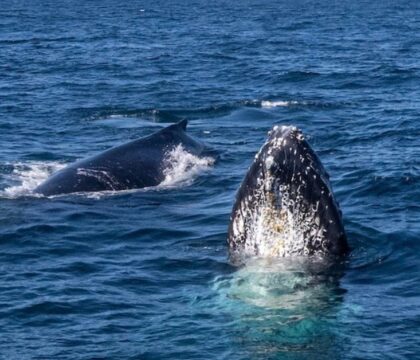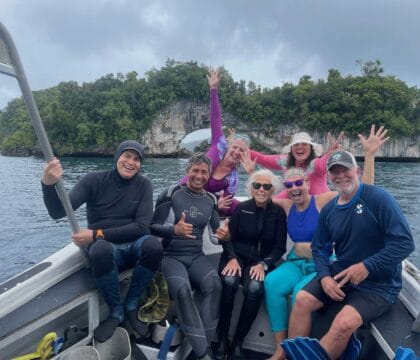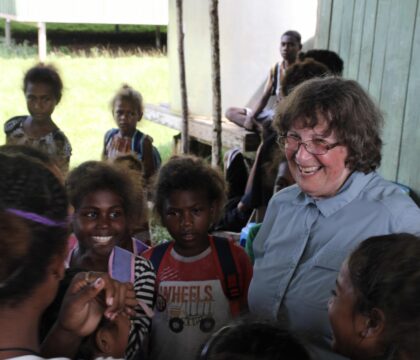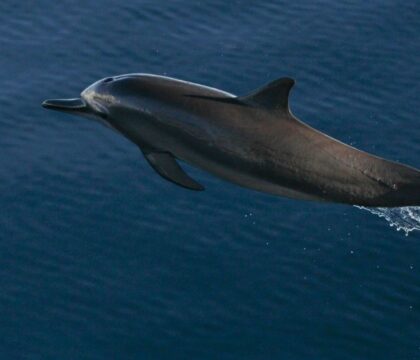March 24, 2016 • Trip Reports
It was dark when I left my house, but the sun was shining brightly upon our group’s arrival in beautiful Loreto (Baja California Sur, Mexico), the starting point for our Baja: San Ignacio Lagoon and Sea of Cortez expedition.
We spent our first two days in the spectacular Sea of Cortez, surrounded by granitic mountains, blue skies, and rich, blue waters. After the sighting of a humpback whale, hundreds of common dolphins escorted us towards four blue whales. We spent consecutive days watching the largest animals on Earth feed on krill.
After a few margaritas, delicious food, and a good night’s sleep, on day three we embarked on a (windy) 6 hour drive from Loreto, across the Sierra de la Giganta, down a very bumpy dirt road, and through the salt flats (with some beautifully crystalized formations) to our tented camp on the Pacific side of Baja in Laguna San Ignacio. The camp is constructed and deconstructed every year for the 2-3 months of ecotourism with the gray whales.
Gray whales make the largest migration of any mammal—from the summer feeding grounds near Alaska to the winter breeding grounds along the Pacific coast of Baja California. In the calmer, protected lagoons, the whales reproduce and rear their calves. Once the calves are strong enough, the whales repeat their incredible migration and return back to feeding areas in the North Pacific. Baja is truly the best place for whale watching!
From our tented camp, we went out twice a day to the whale watching zone of San Ignacio Lagoon (most of the lagoon is protected for the whales and therefore off-limits to boats). In the mornings, we found ourselves, and our panga (skiff), visited by curious and friendly whales, mostly calves, and sometimes at the nudging of the cow (mom).
Eye contact with the whales, stroking (petting) their heads, and cleaning the spray from their blow off of our cameras and sunglasses were common occurrences.
In the afternoon, the whales (around 300 total) spy hopped, breached, and traveled past the boats—sometimes rotating their heads to get a good look. The whale watching experience was phenomenal. And there was much more wildlife, including seabirds, shorebirds, dolphins, and sea turtles. Fascinating people visited us too. At camp one evening, Dr. Steve Swartz shared insight into his 40+ years of research with the gray whales in San Ignacio Lagoon and graciously signed copies of his book,
Lagoon Time.
While I was in awe of the trust in these whales to approach people and boats (less than 100 years ago people were in the lagoons killing them) and amazed to be so close that we could see the hair on the rostrum (head region), I was equally impressed with the actions and respect of our panga captains. Twice we were having incredible interactions with multiple friendly whales when the captains noticed our approach to the border of the off limits whale watching zone. They turned our pangas around and headed back into the safe zone. As a marine conservationist, I’m thrilled that the captains are following and respecting the conservation plan. As Mahatma Gandhi said, “The future depends on what we do in the present.” And, we all can make a difference.
I want to thank our wonderful group of travelers—Susan, Heath, Sylvia, Brook, Stephanie, Jessie, Arlinda, and Paulette—for supporting Oceanic Society and joining me on this trip. You’re the best whale watchers! Heath Culp is also an incredible photographer. Make sure to check out his photos from the trip on Flickr! (They are much better than my iPhone shots). Thank you for sharing, Heath!




